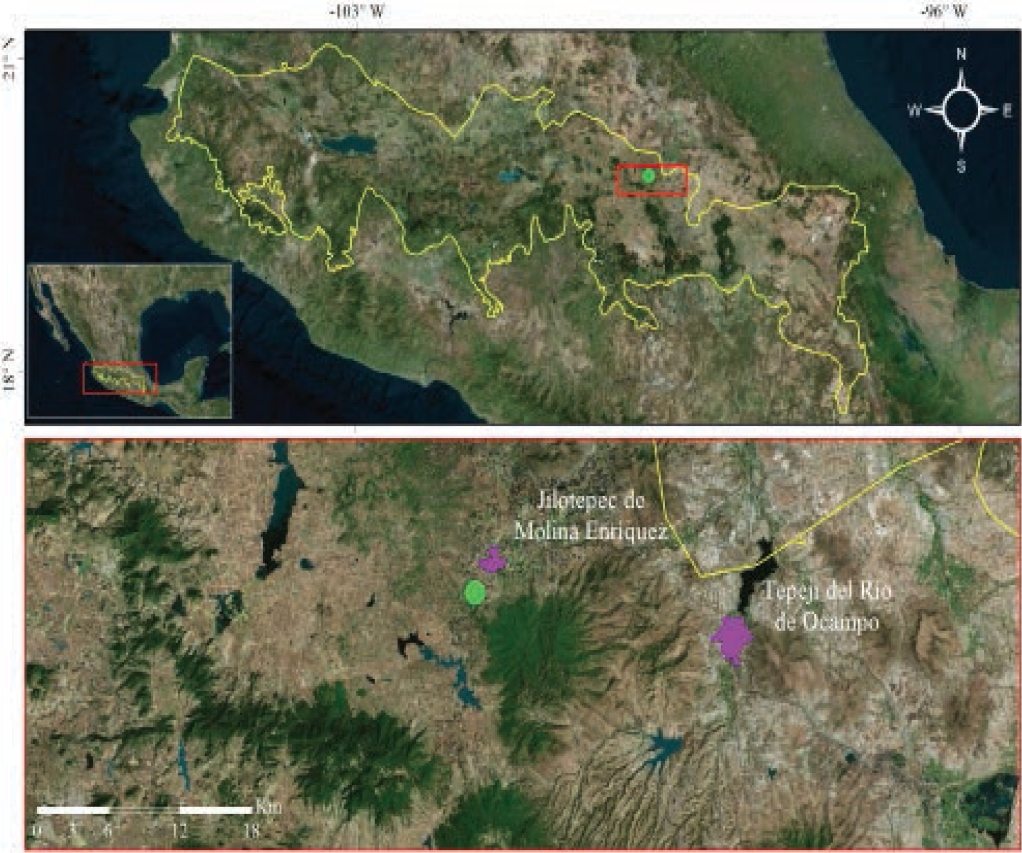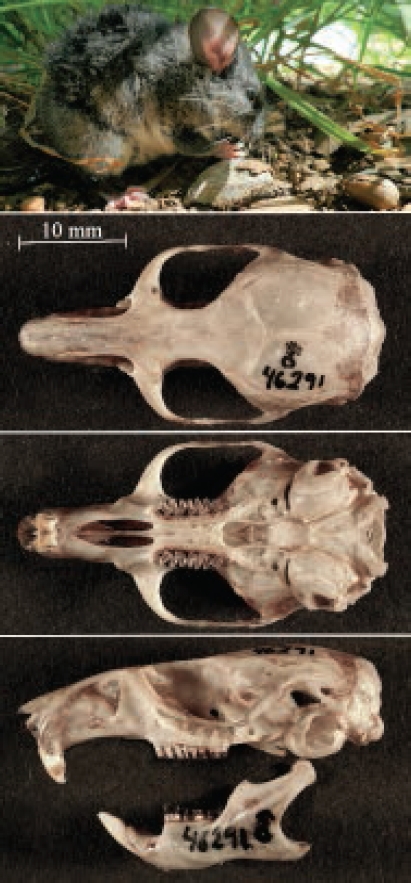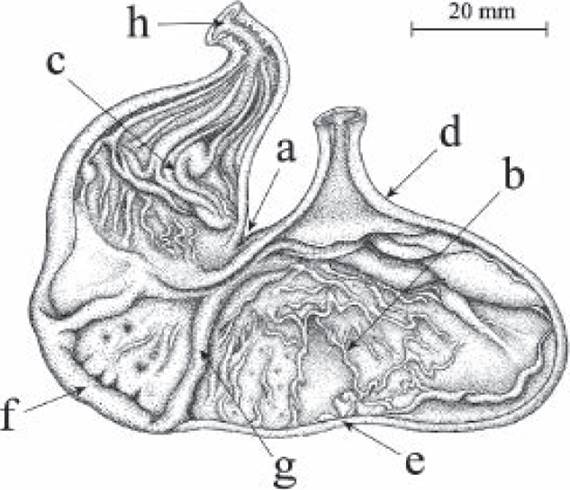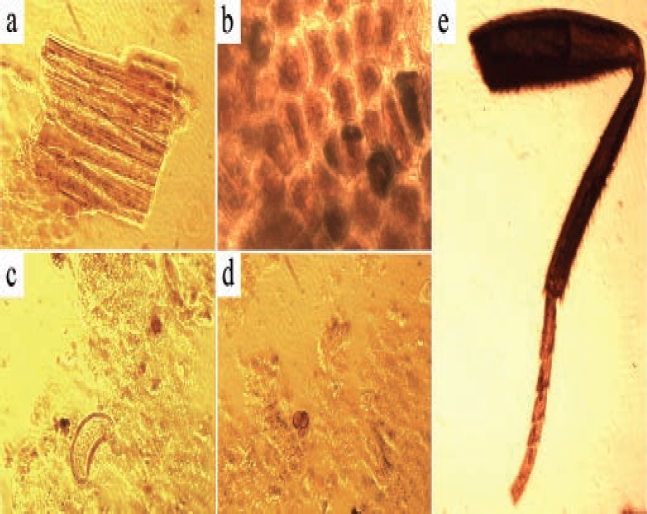Introduction
Mexico hosts a wide diversity of rodents with an estimated number of 233 species, which 140 belongs to the family Cricetidae (Ramírez-Pulido et al. 2014). Nevertheless, most of these species have scarce information about its basic biology, such as demography, ecological role in their communities, and history life, to mention some examples (Fernández et al. 2014). Furthermore, some of these rodents are listed under some category of extinction risk, and for which the lack of information is critical, for instance, for the development of plans aimed to their habitat conservation (SEMARNAT 2010).
One of these species is the Goldman´s diminutive woodrat Nelsonia goldmaniMerriam 1903, an endemic taxon that inhabits temperate and humid regions of highlands of central Mexico. It is considered an uncommon species due to few specimens collected after being discovered and its fragmented geographical distribution across the biogeographical region known as Faja Volcánica Transmexicana (León-Tapia 2013). As well, this species is under “Special Protection” by the NOM-059-SEMARNAT-2010 (SEMARNAT 2010) in Mexico and “Endangered” by the by the International Union for Conservation of Nature (IUCN; Álvarez-Castañeda and Castro-Arellano 2008).
Most of the basic aspects of the biology of this species is unknown, mainly related to the few biological material available of this rodent and making difficult to carry out some studies such as particular internal morphology and the diet. Therefore, in this study we describe for first time the macroscopic stomach morphology and its content from one individual of N. goldmani in order to provide information related to the digestive system morphology and the food items consumed by the rodent.
Materials and Methods
One adult male of N. goldmani was collected with the authorization FAUT-0002 on October 16 2010 and vouchered in the Colección Nacional de Mamíferos (CNMA 46291), at the Natural Park “Las Peñas”, Jilotepec, Estado de México, Mexico (Figure 1; León-Tapia 2013). The vegetation at the collecting locality was mainly oak forest (Quercus sp.) with some areas with fir and montane cloud forests (Engstrom et al. 1992; Carleton et al. 2002).

Figure 1 Geographic location of the specimen of Nelsonia goldmani (CNMA 46291) collected at the Faja Volcánica Transmexicana in México (yellow polygon). The green dot shows the collecting locality of the specimen close to the main towns of the region in purple polygons.
From this specimen we removed the stomach in situ cutting the end of the esophagus and duodenum, immediately preserved it in 70 % alcohol, and posteriorly stored it at -72 °C. For the stomach description and the terminology of the structures, the classical methodology stated by Careton (1973) was used. The stomach was placed in a laboratory dish and a ventral bisection was made in a horizontal plane, the stomach content was extracted with 70% alcohol and conserved at 4 °C for posterior analyses. We carried out the observation of stomach in a stereoscopic microscope (Nikon SMZ445) and the illustration of stomach and structures was made.
The stomach content was analyzed according to the procedure used to determinate the diet of Peromyscus difficilis (Morales-Medina 2010; Peralta-Juárez 2015). The stomach material was disaggregated on a glass slide, covered with a coverslip and sealed for its preservation. Subsequently, observations were carried out in an optic microscope Zeiss Axiophot 7082 in order to locate the stomach items. During this process, pictures were taken with a digital microscope camera Moticam 2000 and the software Motic Image Plus 2.0. We used different colored filters in addition to black and white filters for color investment in order to highlight the desired stomach items. Finally, the pictures were edited for emphasizing some structural features of such items in order to taxonomically identify them using specialized literature (Linconff 1988; Andrews and Caballero 1989; Phillips 1991; Guzmán 1998; Palacios-Vargas et al. 2014).
Results
The specimen of N. goldmani was taxonomically identified by both external and internal characteristics (Figure 2). According to the color nomenclature (Ridgway 1912), we determined that it was dark dorsally (buffy olive at tips and blackish slate at base), white ventrally, laterally olive lake and the hind feet white with olive lake color at the upper parts. The tail was large with long liver brown hairs dorsally and cream color ventrally, but no completely bicolored and with a distinctive terminal tuft of hair. The external measurements in mm were: total length 260, tail length 140, hind foot length 25 and ear length 24. The skull was flattened with the presence of the diagnostic anteorbital zygomatic notch and the singular prismatic molar pattern. The cranial measurements according to González-Cózatl et al. (2016) were: greatest length of skull 32.8, length of rostrum 13.11, breadth of zygomatic plate 3.76, mastoid breadth 14, zygomatic breadth 16.67, interorbital constriction 4.63, breadth of rostrum 5.51, width of interparietal bone 10.24, breadth across molars 6.33 and depth of skull 10.39.

Figure 2 Photographs of the Nelsonia goldmani (CNMA 46291). From top to bottom: individual feeding on seeds of oak (Quercus sp.), dorsal, ventral and lateral view of the skull.
Stomach description. According to the gastric glandular epithelium arrangement, N. goldmani has a bilocular-discoglandular stomach (Figure 3). The incisura angularis is deep and proyected beyond the esophageal opening forming the stomach bilocular condition well defined. The fornix ventricularis archs are located further from the esophageal opening and slightly curved to the esophagus. The size of corpus, mainly in fornix ventricularis section, is elongated horizontally. The antrum walls are muscular, more visible near the pyloric opening. A bordering fold surrounds the glandular epithelium, and restricted by a small curved area on the left side of the grandular zone at the bottom of the stomach. The cornified squamose epithelium coats the remaining areas of the antrum and corpus.

Figure 3 Illustration of the macroscopic bilocular-discoglandular stomach structures of the Nelson and Goldman’s woodrat Nelsonia goldmani (CNMA 46291). a) incisura angularis, b) corpus, c) antrum, d) fornix ventricularis, e) cornified squamous epithelium, f) glandular epithelium, g) bordering fold, and h) anterior end of duodenum.
Stomach content. Several food items of plant origin were detected in the stomach content, such as epidermal tissue mainly consisting of stems and leaves, pollen of gimnosperms and spores of ferns and fungi. Likewise, animal tissues were observed, such as mouth appendages and legs of insects (Figure 4). The plant tissues were most frequent in the analyzed samples, and the spores were scarce.
Discussion
The stomach morphology of N. goldmani was similar to its sister species N. neotomodon, described previously by Careton (1973), with the exception of the fornix ventricularis, which is further flattened and elongated. Nonetheless, it has been shown that this structure can vary between individuals and mainly depends of the amount of food before dissection. Hooper (1954) pointed out that some stomach structures like the pronounced incisura angularis in rodents as N. goldmanik, with a bi1ocular stomach, could increase the area for intensive mixing and reworking of the food bolus. However, this information is limited to make inferences about feeding.
Regarding to the stomach content, it was possible to identify that this individual ingested mainly plant items. Similarly, the insect items could indicate that were occasionally ingested by the specimen. These results were similar to the observations reported for N. neotomodon from one specimen from San Luis, where the mainly food items were a green mass with the appearance of fir (Pseudotsuga menziesii) or junipers (Juniperus sp.) needles (Hooper 1954).
Prior to the capture of the specimen of N. goldmani, we observed the individual feeding on lichens on the bark of trees and photographed it eating seeds of Quercus sp. (Figure 2). These observations could indicate that this species likely eats a wide plant resource available in the locality. However, it is indispensable to carry out specific studies throughout the years in order to have an approximation about its diet.
The diet for the two species of the genus Nelsonia is unknown mainly due to the difficulties to capture these rodents. Even so, the findings in this study contribute to the knowledge of the basic biology of N. goldmani and the results are comparable to those reported for other rodent species that inhabit environments apparently similar in the highlands of central Mexico, such as Peromyscus aztecus, P. difficilis and Reithrodontomys fulvescens. These rodents feed preferentially upon plant material of different composition according to the conservation condition of their habitat (Vázquez et al. 2004; Peralta-Juárez 2015).











 text new page (beta)
text new page (beta)



